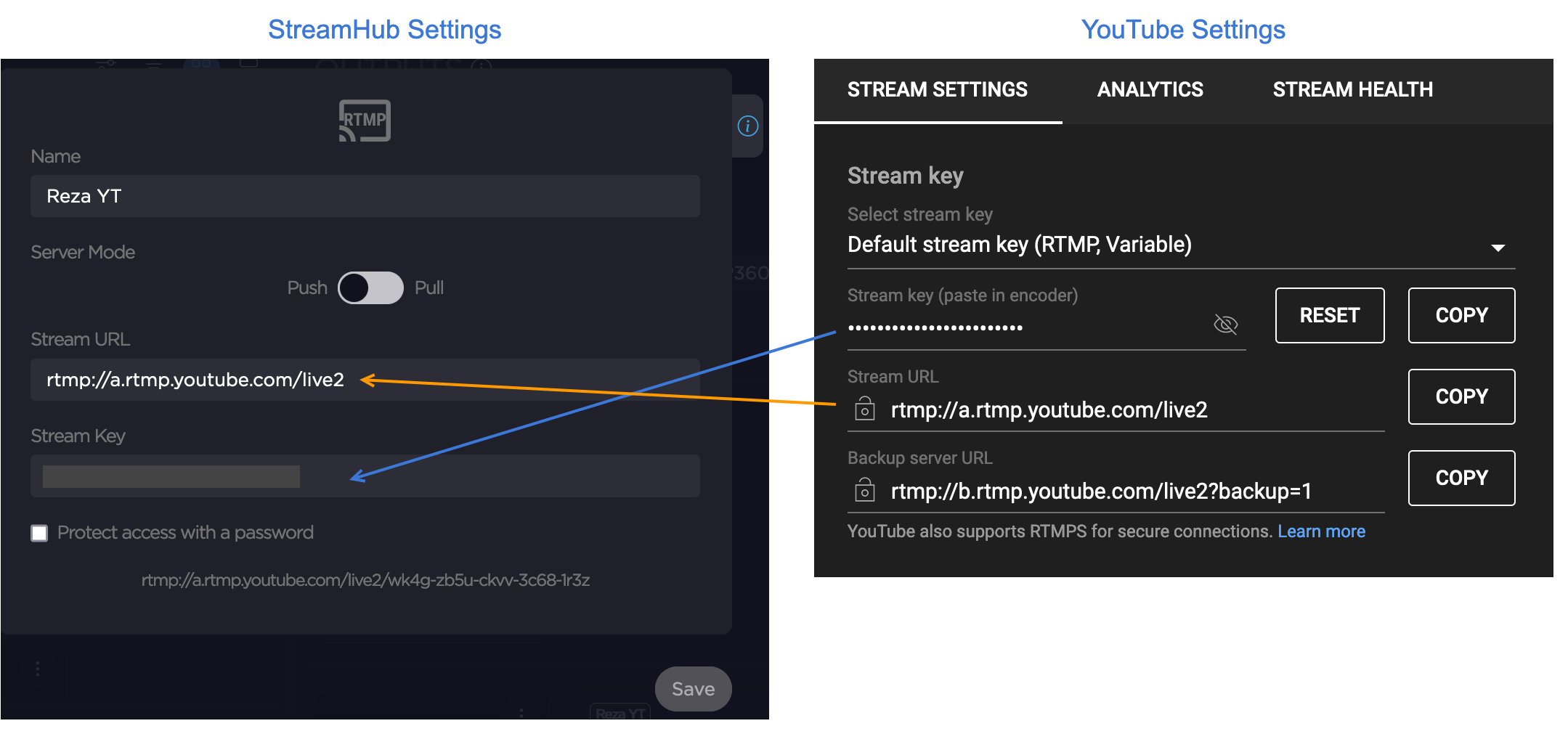Streaming to YouTube
Purpose
StreamHub can be configured to output stream using RTMP or RTMPS Protocol for streaming to social media such as YouTube.
Prerequisites
StreamHub license
IP Output license (AW-OR-OIP)
Firewall and network configured to allow RTMP or RTMPS output
YouTube account
Note
A StreamHub Live Encoding license (AW-OR-ENC) may be required depending on the characteristics of the input stream from the transmitter/encoder.
Procedure
To begin, you must obtain a Link and Stream Key from YouTube. Log in to YouTube and click on your profile picture to access the YouTube Studio. Click on the Go Live icon as shown in the screenshot below.
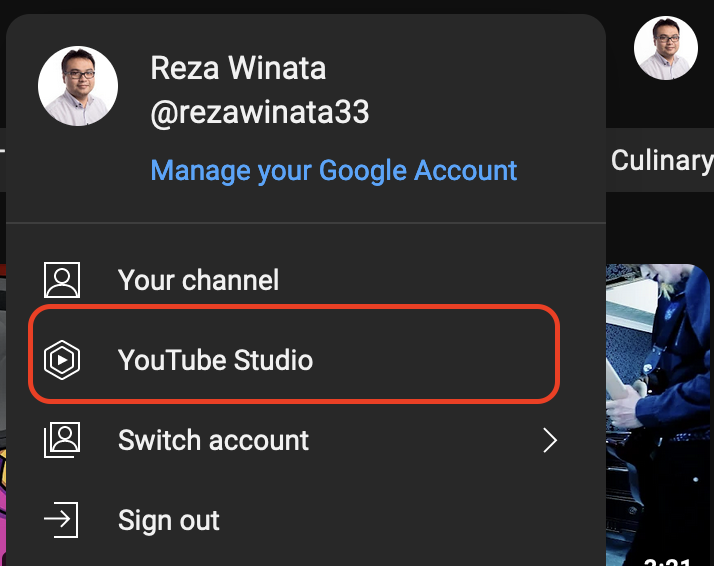

Under Stream Settings you will see the Stream URL and Stream Key (protected).

In a separate browser tab, access your StreamHub server.
To create a new RTMP IP Output in StreamHub, click on the (+) icon in the IP Output section and click the next (+) button under IP Output Profiles.

Click on the RTMP protocol button to create an RTMP output profile.

Configure the RTMP Profile, using the Stream URL, Stream Key, and RTMP Push Mode from YouTube (refer to step 3 above).
Tip
If RTMPS is desired, click on the padlock icon next to the YouTube Stream URL to change the URL from RTMP to RTMPS. StreamHub can support both RTMP and RTMPS.
Save the RTMP IP output profile.
Select the RTMP IP Output profile by clicking on the associated radio button. An IP Output with the selected RTMP profile is enabled.


Configure the StreamHub Encoder.
Important
As per YouTube specification on the following page:
https://support.google.com/youtube/answer/2853702?hl=en
There are certain requirements on the video / audio codec as well as resolution and frame rate which can be managed by YouTube. If the source transmitter is sending non-supported configuration such as HEVC video codec then an error will appear in the StreamHub RTMP output about “Codec not supported”.
In this case, it is necessary to transcode the stream first using the StreamHub encoder function to make it compatible with YouTube.
Note
Please consult the YouTube support page for other recommended resolutions and bitrates.
Select the saved Encoder Profile by clicking the associated radio button. An Encoder with the selected Encoder profile is enabled.


Link the workflow from Input > Encoder > Output. This allows the input stream to be transcoded first to a YouTube compatible format before outputting the stream to YouTube. There are two methods:
Method A: Drag and drop the desired input icon onto the Encoder, and then drag and drop the Encoder onto the Output icon.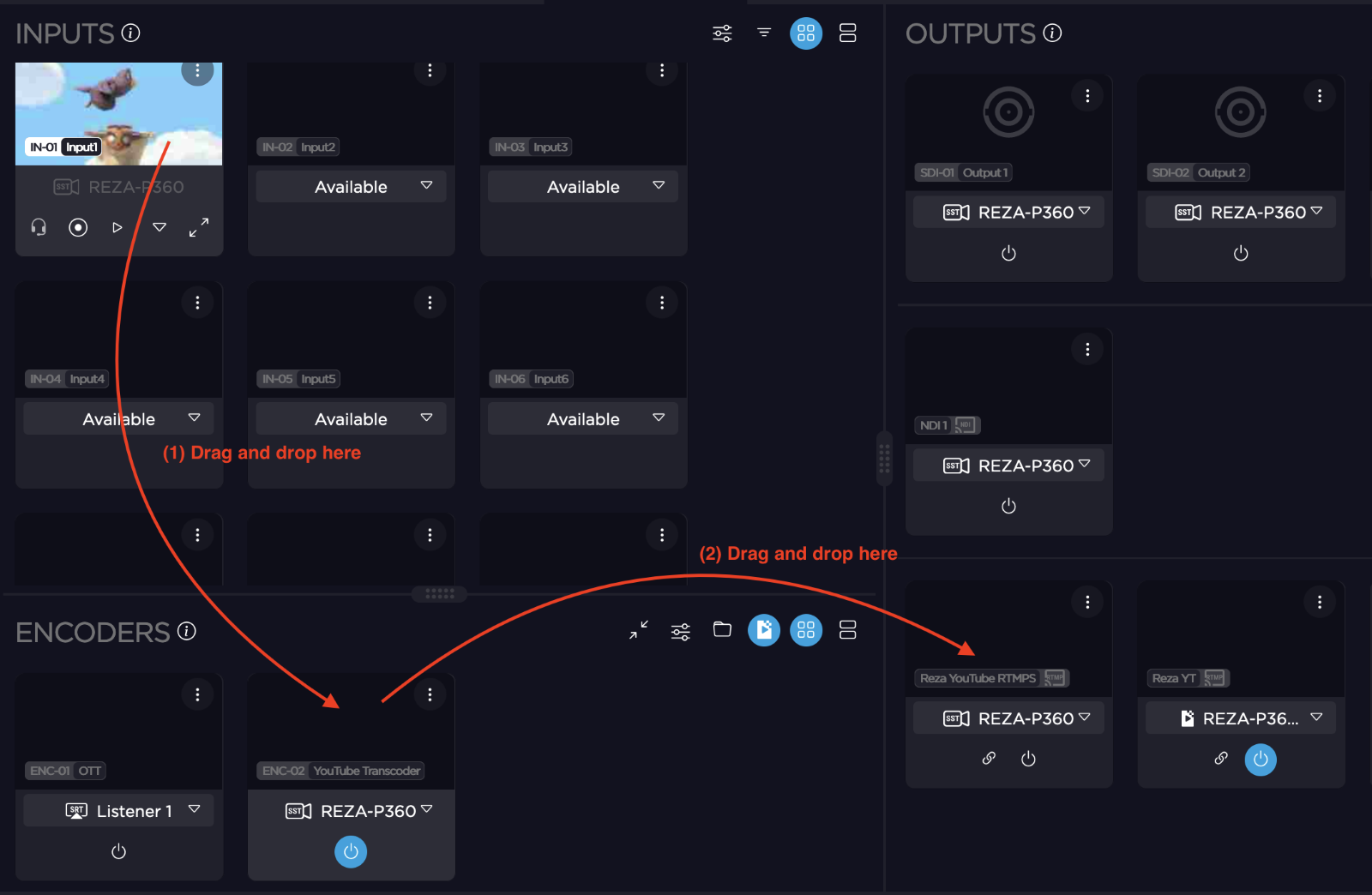
Method B: From the Encoder drop down, select the input desired to be transcoded, and then select the Encoder in the output drop down to output to YouTube.
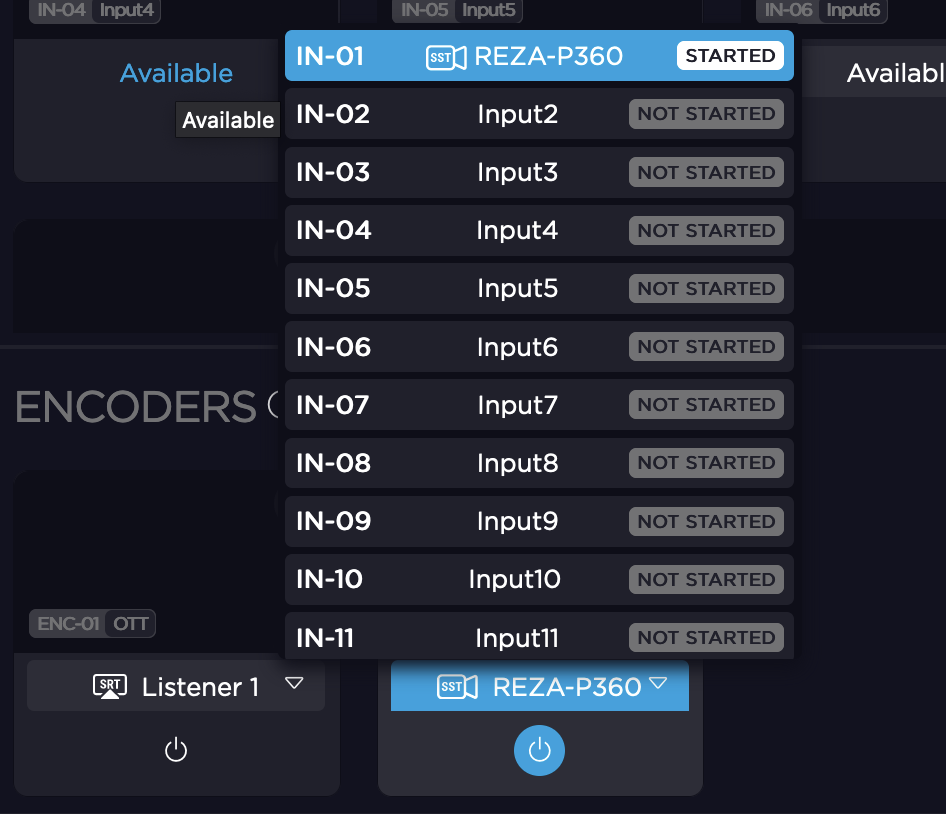
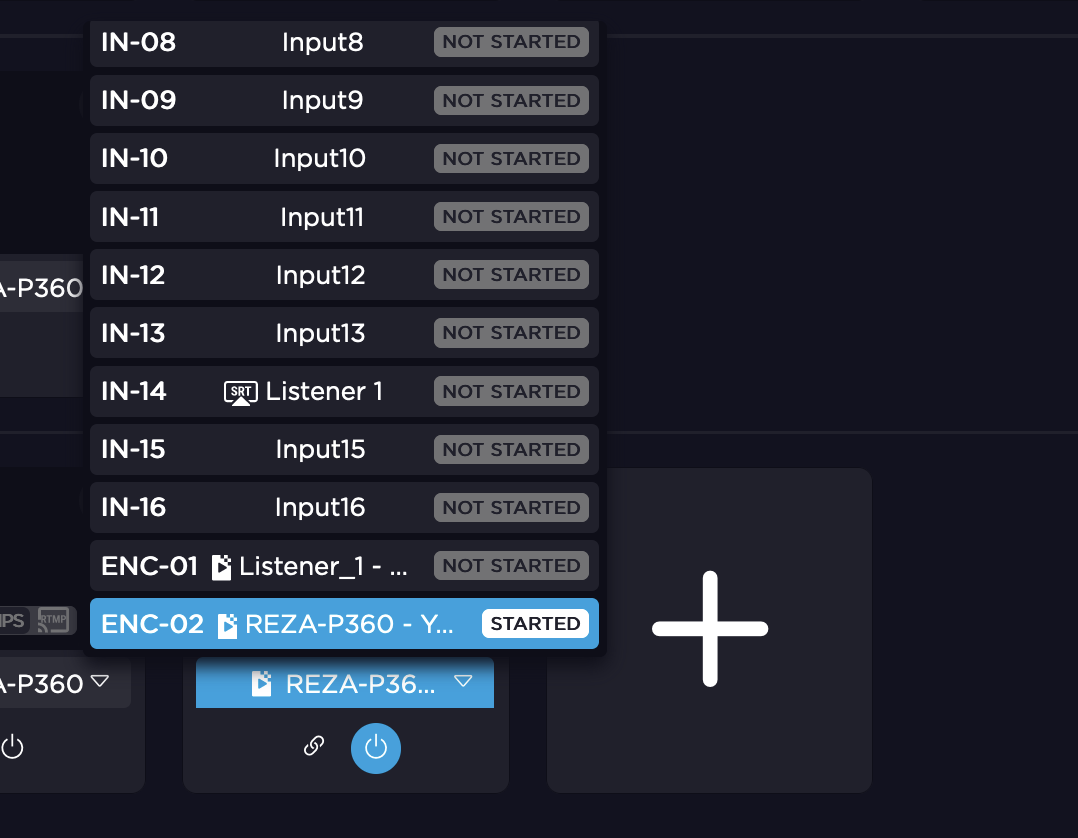
The input is now assigned to the Encoder for transcoding into a YouTube compatible format, and then the transcoded stream is set to output to YouTube as configured under RTMP IP Output.
If the stream is not already live, click the Live button on the input (or from the transmitter unit) to start live streaming.
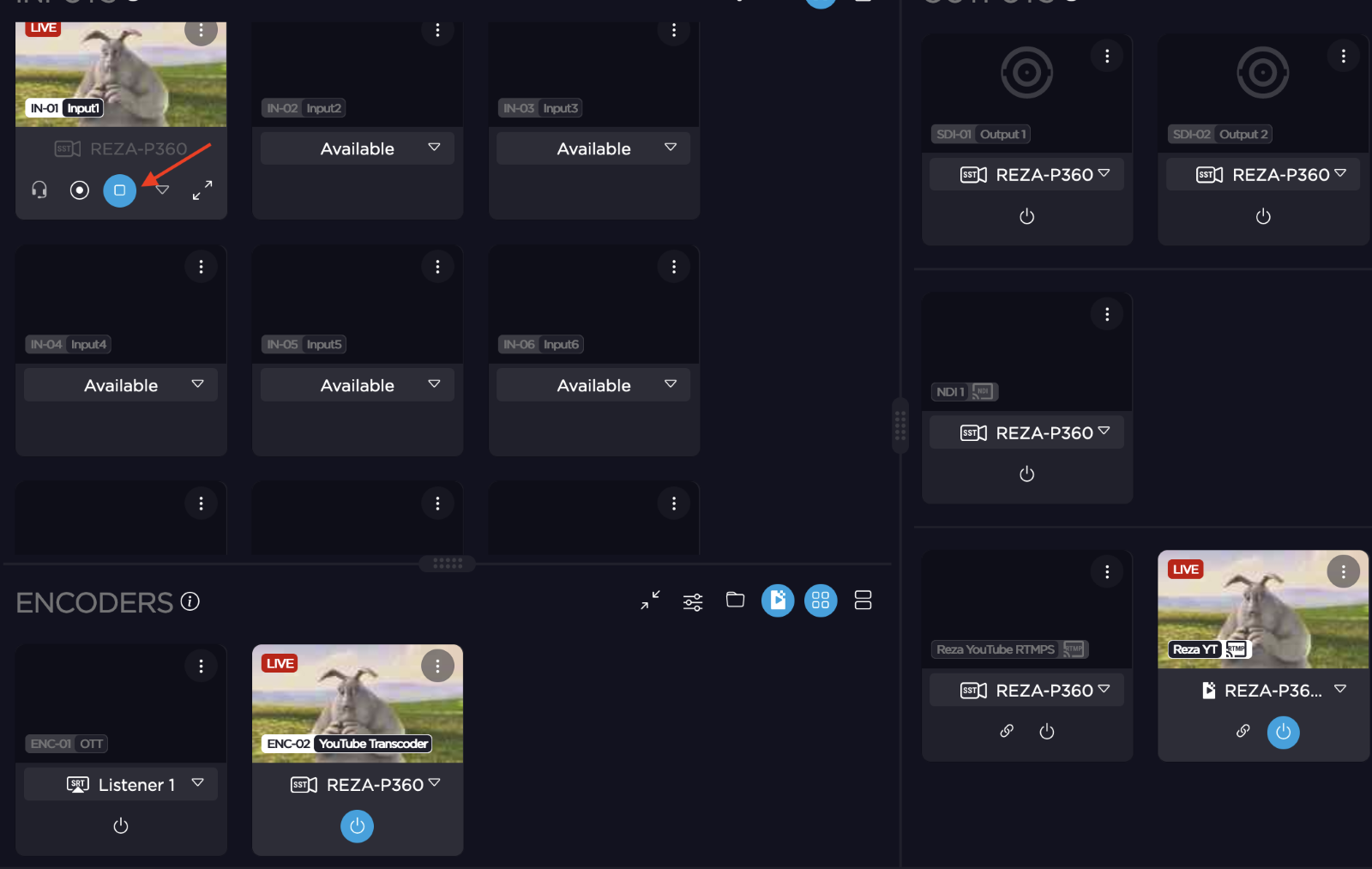
The live stream should appear in the YouTube Studio view:


